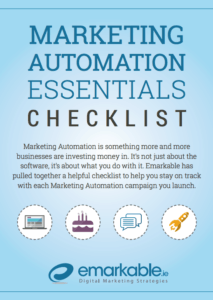Mood Boards: Why You Cannot Afford to Ignore Them During Web Design
About to embark on designing a new website? You have a lot on your plate, undoubtedly. You need to think about things like navigation structure, user-first design, content creation, and a lot more. However, you cannot afford to ignore mood boards. What are they and why are they such a critical component of your website design process?
What’s a Mood Board, Anyway?
You can think of a mood board as being similar to a wireframe or an outline. It’s a way to communicate how a website will be designed, how various elements will appear on the site, and can complement written or verbal discussions about the design of the site.
Mood boards can be physical or digital, and they can be used to highlight almost any visual element of website design, including:
- Typography
- Colour palettes
- Imagery
- Website structure
- Form fields
Why Do Mood Boards Matter?
When you get right down to it, there are a few very compelling reasons that you cannot afford to ignore mood boards. These include the following:
- Accuracy – Verbal discussion of website design elements leaves a lot of room for inaccuracy and misunderstanding. Written instructions and notes are just as bad. A mood board provides concrete visual direction that helps to eliminate inaccuracies and misunderstandings.
- Time – Because mood boards are visible, and because you can create as many as necessary for all sections of a website, they help to save time and eliminate frustration. And, the faster your website is finished, the faster it can be put up and start serving your customers or clients.
- Money – Mood boards help you save money by eliminating needless back and forth and miscommunication.
- Everyone Is on the Same Page – Finally, mood boards help ensure that everyone is on the same page when it comes to the design elements of the website, from the colours chosen to the fonts used in various areas of the website, and everything in between.
What Can Mood Boards Do?
We’ve touched on the benefits of using mood boards, but what can they actually do for you? Actually, they can play a number of different roles in the website design process.
Explaining and Exploring Your Vision – Chances are good that you have at least a rough idea of what you want your website to look like. However, it can be difficult to communicate that to your designer. Using a mood board allows you to explain your vision and even explore your options. You can use them to bounce ideas around, to collect inspiration to show to your designer or design team, and more.
It’s really all about communicating ideas and organising what inspires you. It’s possible to create multiple mood boards, each of which could explore a particular element of your website. For instance, you could dedicate an entire mood board to font, font size, and font colour. You could create another to explore ideas in terms of layout and design, and another for stock photos and illustrations.
Communicate with Your Stakeholders – It’s highly likely that there are many people with a stake in the website design who may play less than central roles in the design process but who have a vested interest in how the final design functions. Mood boards help ensure that you are able to communicate with all of your stakeholders, whether they’re in separate departments in your business or are outside your business. This is particularly true with digital mood boards stored in the cloud, which can be shared quickly and easily via a link.
Setting Standards – When it comes to your organisation’s website, you have standards in mind. These include basics like your logo and company-specific colours, but chances are good that there are other standards, as well, such as voice, tone, and personality. Mood boards allow you to explore these elements and then set them for the entire project. From branding guidelines to the level of formality within your text content, mood boards help ensure that you’re able to achieve the ideal combination for your business and your audience.
Conclusion
As you can see, mood boards can be powerful tools in the website design process, ensuring accurate communication, and allowing you to explore ideas and collect inspiration. It’s all about establishing the look and feel of your website before the actual design work even begins. However, understand that mood boards are not your actual website, and that spending too much time adding and removing inspiration from them may negatively impact the overall progress of the project. They are also not ideal for use with specifics, such as focusing on your site map, but are better used for broad-stroke elements.





